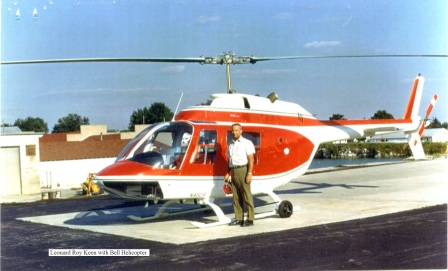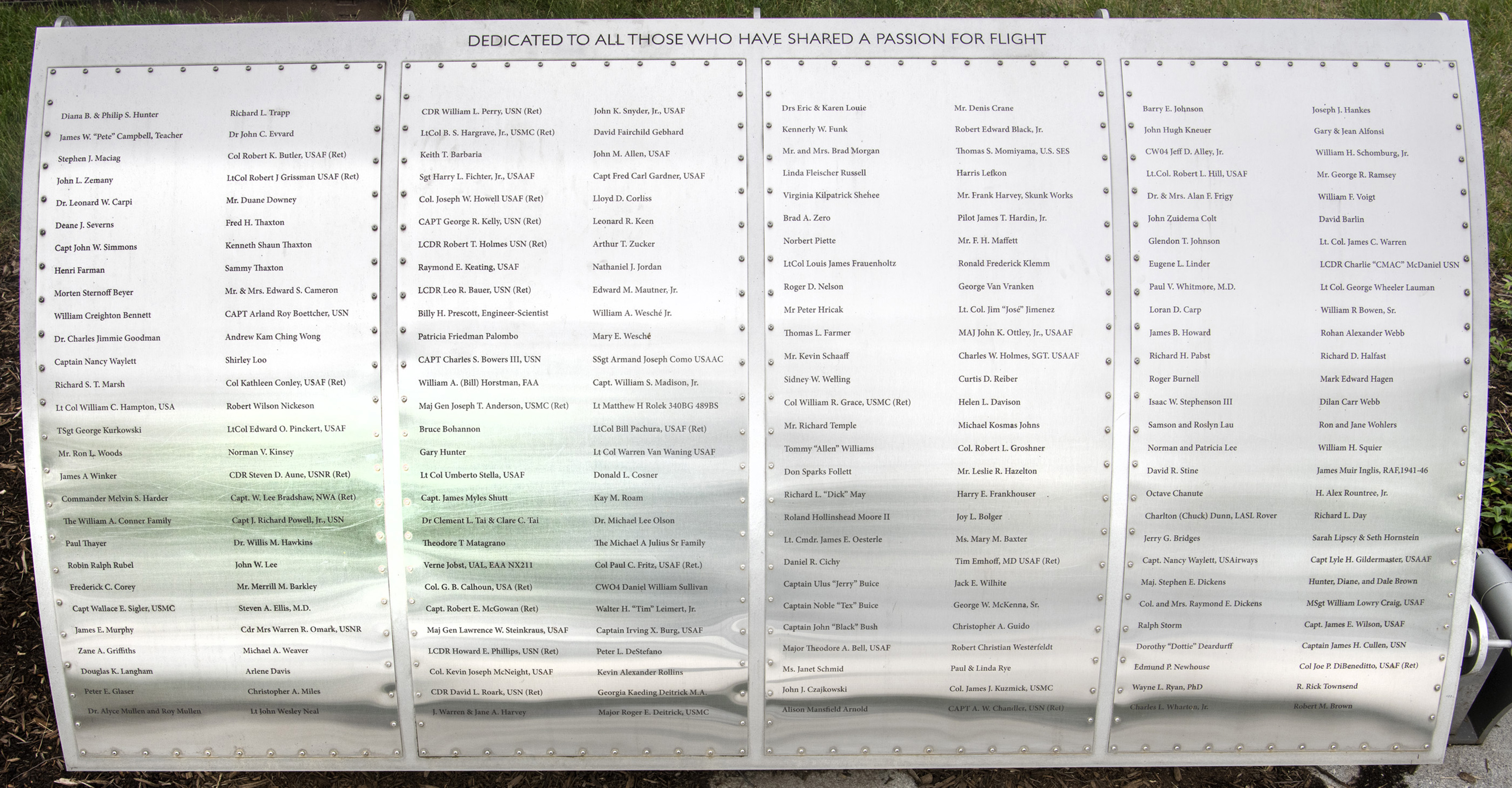
Foil: 22 Panel: 2 Column: 2 Line: 6
Wall of Honor Level: Air and Space Sponsor
Honored by:
Leonard R. Keen was born on 4 October 1925 in Union County, IN. At an early age his parents moved to Preble County, Ohio where Leonard was raised and educated in a rural environment, attending a four-room schoolhouse in Fairhaven, Ohio for the first eight years, and Dixon Township School for the last four years, graduating in May 1943. Like most youngsters Leonard was always fascinated by the thought of flying an airplane, and was introduced to flying at the age of 14 on the last day of school in his freshman year by a farmer friend in a J2 Cub.
After graduation, Leonard found employment at Perfect Circle Piston Ring factory in Richmond, Indiana as an apprentice Tool-Maker, and spent the summer Sunday afternoons playing on their industrial league baseball team. Also in June, while still seventeen years of age, he and three other young men employed there took the screening examination for the US Army Reserve Aviation Cadet Program. After receiving a passing grade, on taking the physical examination he was found physically fit, but, at sixty three and three quarters inches in height and one hundred and thirteen pounds, he was one quarter of an inch too short and one pound too light to meet the minimum requirements. On a re-check in September a measurement of sixty four inches in height, met that minimum requirement and his one hundred and eighteen pounds exceeded the minimum by four pounds, and he was sworn in immediately.
After his eighteenth birthday, on October 18, 1943 he received his call for active duty and reported to Fort Thomas, Kentucky on November 3, 1943, and arrived in Jefferson Barracks, Missouri on the morning of November 4 for Basic Training and Classification Testing. On January 6, 1944 he, along with fifty-nine other Cadets, shipped to James Millikin University, Decatur, IL for college training and ten hours of flight instruction in a J-3 Cub. On June 6, 1944 the group shipped to San Antonio, Texas Classification Center (SAACC), for pre-flight schooling and testing for classification. While there he learned his classification was for bombardier. He was assigned to Class 45-C, which meant graduation time would be in March 1945. In August, 1944 in the middle of final examinations from classification, the accidental death of his father necessitated an emergency furlough. On returning to SAACC he learned he could not continue with that class and was held back into Class 45-D. As fate would have it, by the time another trip through pre-flight had been completed, the war situation was looking more favorable for our side and bombardiers were not such a high priority. It was determined class 45-D would remain in SAACC for further training. Finally, in March 1945, someone came up with something called, "On the Line Training," and Leonard was part of a group sent to Blackland Army Airfield, Waco, Texas for further assignment. Leonard, assigned to the Physical Training Department as a physical training instructor, tried out for and became a member of the base softball team, playing games at different cities in Texas and Louisiana. After the surrender of Japan, thoughts again turned to a group of unnecessary Cadets, and in October 1945, it was determined they should be discharged at the convenience of the Government, and he was discharged November 3, 1945.
Returning to Richmond, Indiana to live and work, he met the love of his life, Alma Hoge Canby, an Iowa girl attending Earlham College, and they were married June 15, 1946. Out of this union three children were added to the family: Gary, born July 25, 1948; Lee, born January 30, 1952; and Mary, born December 14, 1955.
Using his G.I. entitlement he began taking flying lessons in February 1947, soloing in an Aeronca Champ and received his Private License in May 1947 and his Commercial License in November 1949. Realizing an Instrument Rating on a low-time Commercial would provide limited opportunities for employment, he chose rather to next obtain the Flight Instructor Certificate, which he completed in April 1950.
In 1948, when he saw a possibility of making flying his life work, and learning most airlines, like the military, had minimum height requirements, he left his factory job for a position as Station Agent for Delta Airlines at their newly opened facility at the Richmond airport. When Delta closed their Richmond operation, he transferred to Delta's operation at the Cincinnati airport, which offered more opportunity for part-time instructing in order to build time and receive his multi-engine and instrument certificates.
In April 1953 he had reached the 1000-hour mark and was invited to enter co-pilot training with Piedmont Airlines in Winston-Salem, North Carolina. Leonard considers it a privilege and honor to have been part of the DC-3 age. As the fall of 1954 rolled around, the announcement that reduction in Air Mail subsidies might mean a reduction in the number of pilots, the offer of leaves of absences was made available by Piedmont to reduce the number they might need to furlough.
On hearing of an opening in Bloomington, IN, flying a Twin Bonanza for a construction company, Leonard applied for and was chosen for the position, one he considered to be especially challenging since there had been a fatal aircraft accident within the company three years earlier.
Leonard began his employment with Ralph Rogers & Co., Inc. on October 1, 1954. For the next 36 years selling the wisdom and the safety of corporate-owned aircraft and commercial aviation became his number one endeavor. Not only Mr. Rogers but others in the company found it necessary to travel, and they benefited both in time saved and in the safety of being off the highway. They learned well and the transportation needs increased due to the ability of the company to reach out to more distant markets, and the Aviation Department grew. Over the years different aircraft and additional personnel were added, according to the needs. Piston-powered aircraft were replaced with turboprop aircraft, and fewer automobile miles were possible with the addition of a Bell Helicopter. In 1978 the first jet aircraft was purchased, a Cessna Citation II.
Safety was always the paramount consideration, with well maintained equipment and well prepared pilots. Leonard retired from Rogers in 1990, with more than 20,000 hours of pilot time in his logbooks. If asked today he would tell you he is proud of the fact that the Rogers Aviation Department will soon complete 50 years of continuous operation, and today (2005) still operates both fixed- and rotory-wing aircraft.
Wall of Honor profiles are provided by the honoree or the donor who added their name to the Wall of Honor. The Museum cannot validate all facts contained in the profiles.
Foil: 22
